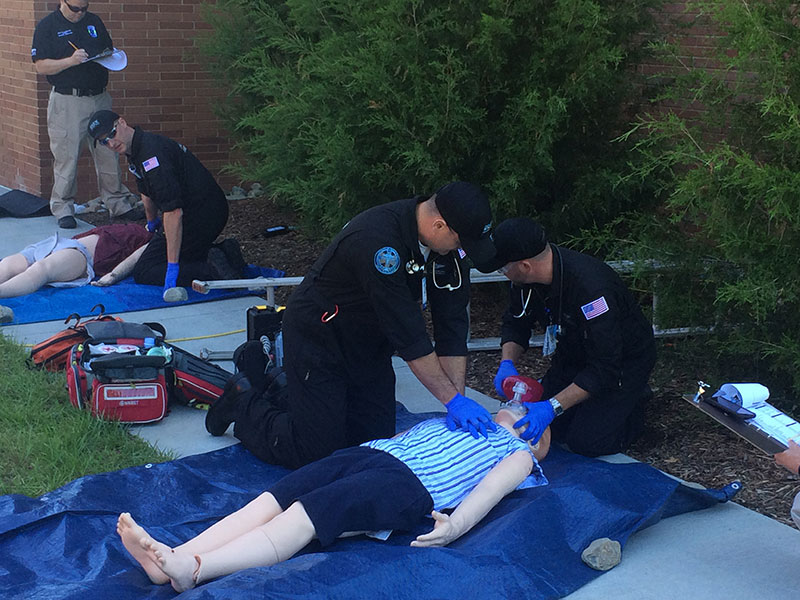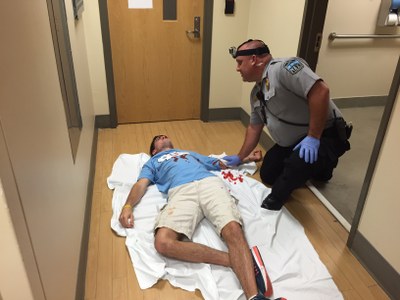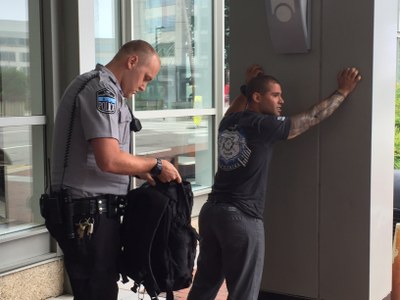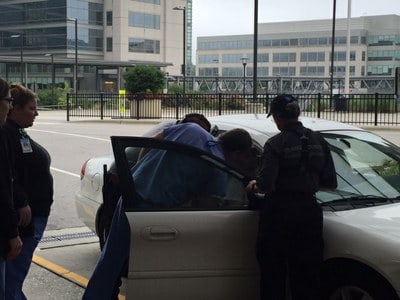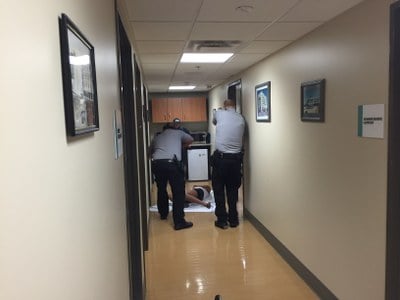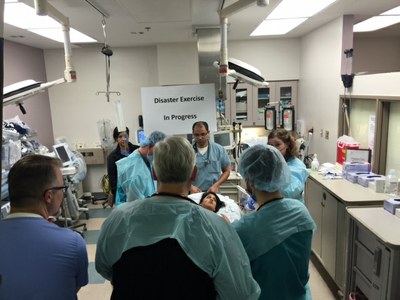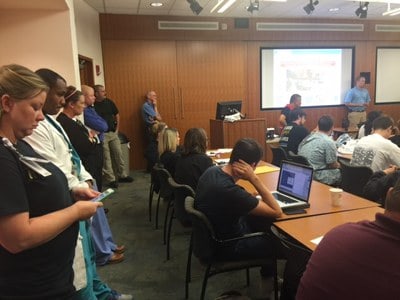The North Carolina Jaycee Burn Center Donates 350 Fire Extinguishers to Families in Need
A fire in Efland, North Carolina launched an idea for fire safety classes that eventually grew to a collaboration between the North Carolina Jaycee Burn Center, Habitat for Humanity of Orange County, Orange County Fire Marshal and Safe Kids that culminated in community education and donation of life-saving fire extinguishers.
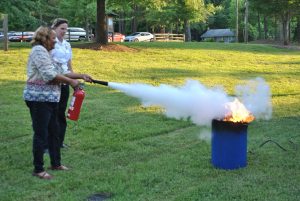
In January 2018 an accidental fire broke out at a home in the Tinnin Woods neighborhood, located in Efland, North Carolina. A fire that began on the outside of the home, spread quickly to the inside, leaving behind a few walls and destroying the property of a family who could ill afford it. The fire and its destruction rocked the small community who thought the smoke alarms and sprinkler systems in their homes were protection enough against something like this happening. Tinnin Woods is a small neighborhood of homes built for and by families in partnership with Habitat for Humanity of Orange County, which works to change lives by bringing together people and resources to help families build and own quality affordable homes in safe and supportive communities.
“There was an outpouring of compassion from the community and Habitat to help the family who lost their home in the fire,” said Marisa Martini, Community Development Manager for Habitat for Humanity of Orange County, NC. “Simultaneously homeowners in our neighborhoods started asking questions about how they could protect their homes and families from this type of tragedy.”
Neighbors and other homeowners quickly came together to support the family affected by organizing a food and donation drive to help address some of the family’s immediate needs. The Habitat Homeowner Planning Committee, a group of homeowners who meet biweekly to discuss community concerns, plan events, and volunteer their time and efforts to help improve their community, led this effort and then involved Martini, to plan fire safety classes.
Martini coordinated with the Orange County Fire Marshal, Jason Shepherd, and his team, as well as the Efland Volunteer Fire Department, Chapel Hill Fire Marshal, and Orange County Emergency Services to conduct fire safety classes. During the classes, held earlier this summer, homeowners learned about common fire hazards, smoke detectors, how to make a fire escape plan, and how to use a fire extinguisher. The events were educational for adults and kids alike since they had a chance to meet firefighters, ask questions, and explore a fire truck.
At the class held in Efland participants had the unique opportunity to use a fire extinguisher first hand. “We bring our fire extinguisher system with us when we teach fire safety classes,” said Shepherd. “It involves our team, that included Assistant Fire Marshals David Sikes and Elizabeth Farnan, creating a controlled fire that people can then practice using fire extinguishers on so they can get confident using one in a real fire.”

There was just one problem, participants were learning how to use a fire extinguisher, a major component of the fire safety class, but few families owned one. Marisa reached out to a former colleague, Anna Stormzand, whom she attended school with at the UNC Gillings School of Global Public Health and who is the coordinator of Safe Kids Orange County. Safe Kids is an international nonprofit organization working to help families and communities keep kids safe from preventable injuries. Safe Kids Orange County, the local coalition chapter, works with a network of partners to reduce traffic injuries, drownings, falls, burns, and poisonings. Representatives include several local Fire Departments, local law enforcement, public health, Orange County Department of Social Services, Orange County Public Schools, Orange County Emergency Services Head Start, Habitat for Humanity, and other child-focused community organizations. They organize events throughout the year to address child safety concerns including Fire Safety.
“During our recent home safety presentation to Orange County Head Start parents, the fire marshal’s office did a presentation on using a fire extinguisher; and it was then we found out that none of the 20 parents who attended the class owned one,” Bailey explained. “We realized there was a big gap that we wanted to help fill. When Marisa reached out to me around the same time, I realized this was an important issue not just for the parents associated with Safe Kids but also others in the community in need such as the Habitat homeowners.”
In her other role, Bailey is the Injury Prevention Coordinator for the UNC Health Care Trauma Program, where she works on projects with Dr. Earnest Grant, RN, MSN, FAAN. Dr. Grant is the Program Manager for Outreach and Education at the North Carolina Jaycee Burn Center at UNC Health Care, one of the largest and most comprehensive burn centers in the world with a 36-bed facility for adult and pediatric care. Through its education and outreach programs, the Burn Center works diligently to improve the quality of emergency burn treatment across the state. “I reached out to Dr. Grant to see if he knew of a grant or resource that would allow us to provide fire extinguishers to families in the community,” said Anna.
“In 2017 we were awarded a FEMA Fire Grant that we used to teach the community fire and burn safety,” explains Dr. Ernest Grant. “When Anna reached out to me for suggestions, we thought it was a fortuitous opportunity to use the funds to purchase fire extinguishers for members of the community willing to attending fire safety classes.”
The FEMA Fire Grant allowed The Jaycee Burn Center to purchase 350 fire extinguishers which they donated to the North Carolina Community. Some of the fire extinguishers were distributed to the each of the participants that attended the fire safety classes in Efland and Chapel Hill as well as to the parents who attended the Safe Kids class. The remaining fire extinguishers will be distributed at community events and will be kept at the Fire Marshal’s office to be distributed during Habitat’s new home dedications and home inspections when needed. “The burn center has a philosophy – the best way to treat a burn is to prevent it from happening. We feel that the donation to these families has the power to do just that,” said Dr. Grant.

